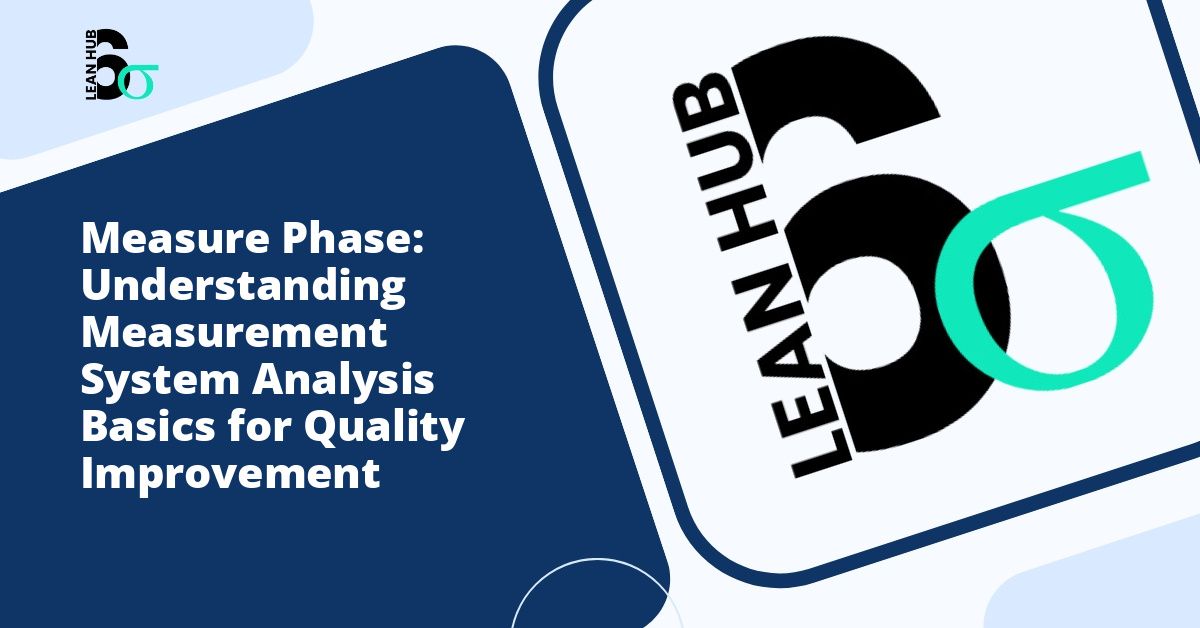In the world of process improvement and quality management, precision matters. When embarking on a Six Sigma project, one of the most critical yet often overlooked components is developing clear operational definitions. These definitions serve as the foundation for accurate data collection, meaningful analysis, and successful project outcomes. Without them, your team risks miscommunication, inconsistent measurements, and ultimately, project failure.
Understanding how to craft effective operational definitions can transform your lean six sigma initiatives from vague aspirations into concrete, measurable achievements. This comprehensive guide will walk you through the essential elements of creating operational definitions that drive clarity and consistency throughout your improvement efforts. You might also enjoy reading about Data Collection Plan Checklist: 10 Essential Elements You Cannot Skip for Project Success.
Understanding Operational Definitions in Six Sigma
An operational definition is a clear, concise detailed description of a measurement or term that specifies exactly how it will be measured or observed. Unlike dictionary definitions that explain what a word means conceptually, operational definitions tell you exactly how to identify, measure, or recognize something in practice. You might also enjoy reading about Operational Definitions in Six Sigma: How to Define What You Measure for Process Excellence.
In the context of Six Sigma projects, operational definitions ensure that every team member, stakeholder, and data collector interprets terms and measurements identically. This uniformity is essential for maintaining data integrity and producing reliable results that can drive meaningful process improvements. You might also enjoy reading about 5 Common Mistakes in the Measure Phase and How to Avoid Them for Lean Six Sigma Success.
Consider the term “customer complaint.” Without an operational definition, one team member might count only written complaints, another might include phone calls, and a third might add social media mentions. This inconsistency would render your data meaningless. An operational definition eliminates this ambiguity by specifying exactly what counts as a complaint and what does not.
The Role of Operational Definitions in the Recognize Phase
During the recognize phase of your lean six sigma project, you identify problems, define project scope, and establish measurement criteria. This phase sets the trajectory for your entire initiative, making it the ideal time to develop comprehensive operational definitions.
The recognize phase requires you to clearly articulate what you are measuring and why. Operational definitions support this goal by providing concrete specifications that eliminate ambiguity. When you recognize phase activities include establishing baseline metrics, your operational definitions ensure that these measurements remain consistent throughout the project lifecycle.
By investing time in creating robust operational definitions early in the recognize phase, you prevent costly misunderstandings later. These definitions become reference documents that guide data collection efforts and help maintain measurement consistency even when team members change or time passes between measurement periods.
Key Components of Effective Operational Definitions
Creating operational definitions that truly serve your Six Sigma project requires including several essential elements. Each component adds a layer of clarity that reduces interpretation variability.
Specific Criteria
Your operational definition must specify exactly what characteristics or conditions must be present. Rather than saying “the product is defective,” specify “the product has visible scratches longer than 2 millimeters on customer-facing surfaces.” This level of detail leaves no room for subjective interpretation.
Measurement Method
Clearly describe how the measurement will be taken. Include details about tools, techniques, and procedures. For instance, “temperature will be measured using a calibrated digital thermometer placed at the center point of the liquid, submerged to a depth of 3 inches, and read after 30 seconds of stabilization.”
Units of Measurement
Always specify units and precision levels. Instead of “measure the time,” state “measure the time in minutes, rounded to the nearest 0.1 minute.” This precision prevents confusion and ensures data consistency across different collectors and time periods.
Inclusion and Exclusion Criteria
Explicitly state what counts and what does not count. For example, when defining “customer interaction,” specify whether emails count, whether internal department requests count, and whether automated system messages count. These boundaries prevent scope creep and measurement inconsistency.
Step-by-Step Process for Writing Operational Definitions
Developing operational definitions follows a systematic approach that ensures comprehensiveness and clarity. Following these steps will help you create definitions that stand the test of practical application.
Step 1: Identify Terms Requiring Definition
Review your project charter and measurement plan to identify every term, metric, or concept that could be interpreted differently by different people. Critical-to-quality characteristics, defect categories, process inputs, and outputs typically require operational definitions.
Step 2: Consult with Subject Matter Experts
Engage people who work directly with the process daily. Their practical experience provides insights into real-world variations and potential measurement challenges. Subject matter experts can help you identify edge cases and unusual situations that your definition must address.
Step 3: Draft Initial Definitions
Write preliminary definitions that include all key components discussed earlier. Focus on being as specific as possible while maintaining readability. Use active voice and concrete language rather than abstract concepts.
Step 4: Test Your Definitions
This critical step separates good definitions from great ones. Have multiple people independently apply your operational definition to the same set of observations or data points. If their results differ, your definition needs refinement. Continue testing and revising until you achieve consistent interpretation.
Step 5: Document and Communicate
Once finalized, document your operational definitions in your project charter and measurement plan. Ensure every team member and data collector has access to these definitions. Consider creating visual aids or quick reference guides to support consistent application.
Common Mistakes to Avoid
Even experienced Six Sigma practitioners sometimes create operational definitions that fall short of their intended purpose. Being aware of common pitfalls helps you avoid them.
Using vague language: Terms like “appropriate,” “excessive,” or “reasonable” introduce subjectivity. Replace these with specific, measurable criteria that eliminate interpretation.
Overcomplicating definitions: While specificity is important, overly complex definitions become difficult to apply consistently. Strike a balance between comprehensiveness and usability.
Failing to address edge cases: Real-world situations rarely fit perfectly into categories. Your operational definitions should include guidance for handling unusual circumstances or borderline cases.
Neglecting the measurement system: An operational definition is only as good as the measurement system supporting it. Ensure that measurement tools, techniques, and training align with your definitions.
Practical Examples of Operational Definitions
Examining concrete examples helps illustrate the principles discussed above and provides templates for your own definitions.
Example 1: Customer Wait Time
Operational Definition: The elapsed time in minutes from when a customer enters the queue (takes a numbered ticket or enters the physical line) until a service representative begins addressing their request (greets them and asks how they can help). Measured using timestamps from the queue management system, rounded to the nearest 0.5 minute. Excludes time when the facility is closed or during system outages.
Example 2: Invoice Error
Operational Definition: An invoice containing one or more of the following: incorrect customer name or address, mathematical calculation errors, wrong product codes, pricing that does not match the approved quote, or missing required fields as specified in the invoice template. Each invoice is counted as either error-free or containing errors; multiple errors on one invoice count as one defective invoice.
Maintaining Operational Definitions Throughout Your Project
Creating operational definitions is not a one-time activity. As your lean six sigma project progresses, you may discover that definitions need refinement or that new terms require definition.
Establish a change management process for operational definitions. Document any modifications, communicate changes to all stakeholders, and ensure historical data remains interpretable despite definition changes. Consider versioning your definitions with dates to maintain traceability.
Regular measurement system analysis helps verify that your operational definitions continue to produce consistent, reliable results. Schedule periodic reviews where multiple observers independently apply definitions to ensure ongoing agreement.
Conclusion
Clear operational definitions form the bedrock of successful Six Sigma projects. By eliminating ambiguity in measurements and observations, these definitions ensure that your project data accurately reflects reality and that your improvements address genuine process issues rather than measurement artifacts.
Investing time during the recognize phase to develop comprehensive operational definitions pays dividends throughout your project lifecycle. The clarity they provide enhances team communication, improves data quality, and increases stakeholder confidence in your results.
Remember that effective operational definitions are specific, testable, and practical. They should enable any trained observer to consistently classify or measure the characteristic in question. By following the systematic approach outlined in this guide and avoiding common pitfalls, you will create operational definitions that strengthen your lean six sigma initiatives and drive meaningful, sustainable process improvements.








